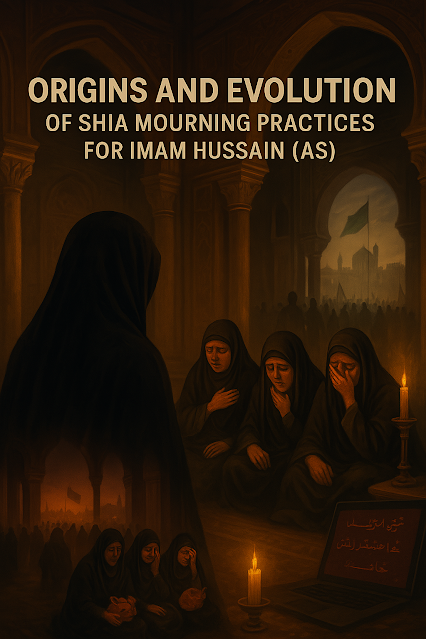Cracking Down on Cybercrime: NCCIA Raids Illegal Call Center in Islamabad, Arrests Over 65 Suspects
Islamabad, July 15, 2025 — In a major operation highlighting Pakistan’s intensified campaign against cybercrime, the National Cyber Crime Investigation Agency (NCCIA) has dismantled an illegal call center operating in Islamabad’s G-10 Markaz. The raid, conducted late Sunday night on July 13, 2025, resulted in the arrest of over 65 individuals, including 5 foreign nationals.
This action marks another significant milestone in the NCCIA’s national “Grey Campaign,” aimed at eliminating fraudulent online operations masquerading as legitimate businesses.
Details of the Raid
The NCCIA's raid took place at Sardar Plaza, G-10 Markaz, and details were made public through an official press release on Monday, July 14, 2025. The agency confirmed that more than 60 Pakistani citizens and five foreign nationals were apprehended during the operation. While the nationalities of the foreign suspects have not yet been disclosed, they are believed to be central figures in the international cybercrime ring.
Authorities recovered a significant amount of digital equipment from the premises, including computers, mobile devices, and cryptocurrency wallets used to facilitate illegal financial transactions. The suspects were unable to present any legal documentation or justification for their activities and confessed to orchestrating large-scale electronic fraud schemes.
Modus Operandi of the Call Center
Investigations revealed that the illegal call center functioned under the guise of a fake online earning platform, part of a larger organized fraud network. The operation relied heavily on deception, utilizing social media platforms such as Facebook, WhatsApp, and Telegram to reach vulnerable individuals globally.
According to the First Information Report (FIR) filed by the NCCIA, the group employed AI-generated images and fake identities to initiate contact with victims. These scammers promised quick and substantial returns through get-rich-quick schemes. Once trust was established, the victims were persuaded to transfer money—often in the form of cryptocurrency—to digital wallets managed by the culprits.
Legal Proceedings and Remand
The five foreign nationals arrested during the raid were presented before Judge Abbas Shah in a local Islamabad court. The prosecution requested a two-day physical remand, which the judge granted, citing the need for deeper investigation into the individuals’ roles in the transnational fraud network.
The prosecution emphasized that these foreign nationals were key facilitators in the operation and that their continued custody would aid in uncovering the wider web of international accomplices.
The NCCIA also announced plans to take legal action against any individuals or entities found to be facilitating or shielding such illegal activities, be they domestic or international actors.
NCCIA’s Broader Anti-Cybercrime Campaign
This Islamabad raid is part of a sweeping national initiative called the “Grey Campaign,” launched by the NCCIA to identify and dismantle fraudulent call centers across Pakistan. Since its inception in 2024, the agency has made considerable progress.
Recent Highlights:
July 7, 2025 (Faisalabad): A massive raid led to the arrest of 149 individuals, including 48 Chinese nationals, linked to a fraudulent cryptocurrency and online trading network.
Operations in Multan, Lahore, and Karachi: Similar raids have been conducted in recent months, in collaboration with international law enforcement bodies such as the U.S. FBI and Dutch police, targeting operations with multimillion-dollar digital fraud footprints.
The NCCIA, established on May 3, 2024, as the successor to the Federal Investigation Agency’s (FIA) Cyber Crime Wing, has expanded its jurisdiction and capabilities to include online fraud, identity theft, digital extortion, and cyberterrorism.
Public Awareness and Advisory
The NCCIA continues to urge the public to exercise caution in online interactions—especially those involving promises of easy income or relationships initiated through social media. Users are advised to be wary of:
Online profiles using stock or AI-generated images,
Unverified offers involving cryptocurrency or financial transfers,
Communications via encrypted messaging apps like Telegram without verifiable context.
To report suspicious activity, the public is encouraged to use the NCCIA’s official helpline 1991 or email at helpdesk@nr3c.gov.pk.
Conclusion: A National Commitment to Cybersecurity
The recent raid in Islamabad is a testament to the NCCIA’s growing effectiveness in responding to digital threats in a rapidly evolving technological landscape. By targeting sophisticated online fraud networks and working in collaboration with international agencies, the NCCIA is positioning Pakistan as a serious player in the global fight against cybercrime.
As the “Grey Campaign” continues, further arrests and dismantling of illicit operations are expected. The agency remains steadfast in its mission to uphold digital integrity and protect both Pakistani citizens and international victims from online exploitation.
For further updates, visit www.nr3c.gov.pk or follow trusted national news outlets such as Dawn, ProPakistani, or The Express Tribune.







.jpeg)

.jpeg)





